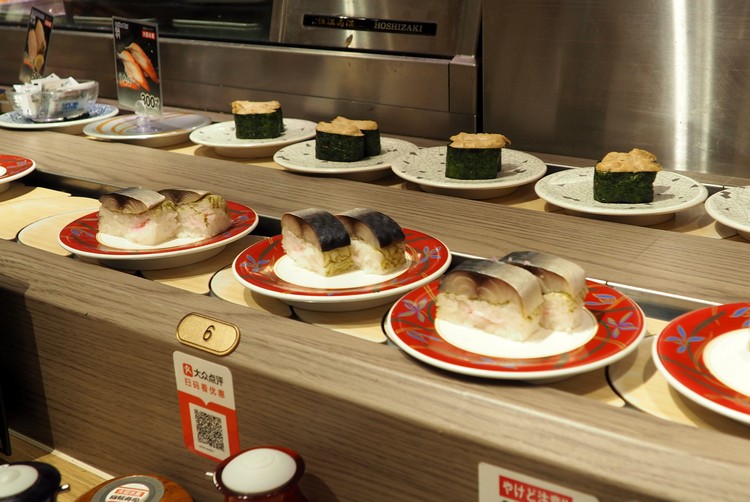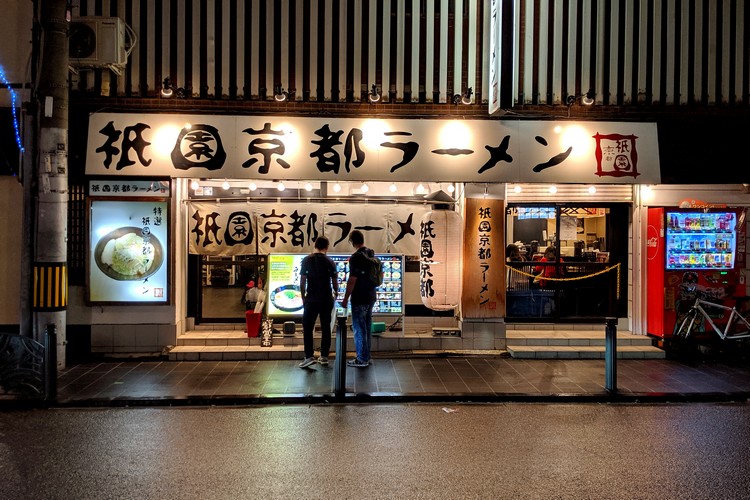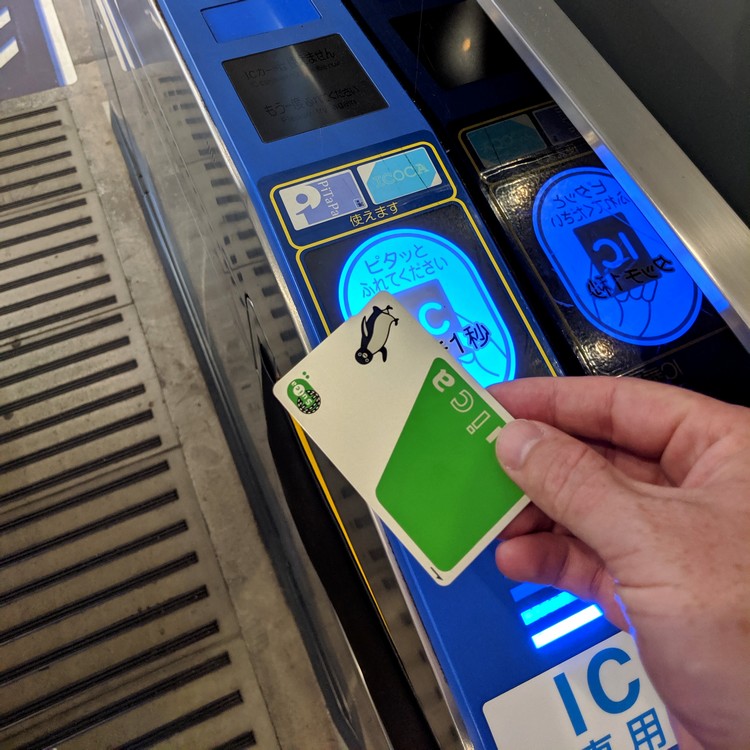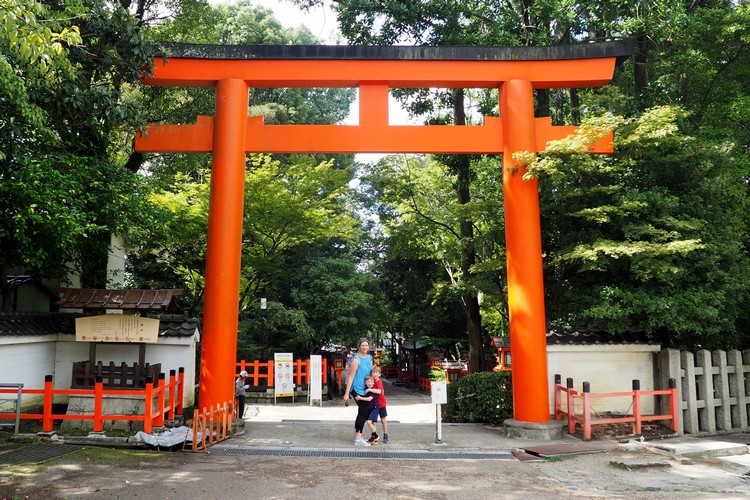Travel Tips for First-Time Visitors to Japan
For first-time visitors, Japan can be an astonishing cultural experience. There are many things to understand before embarking on your journey, which is why this blog post highlights several essential travel tips for Japan.
Japan is undoubtedly one of our favorite travel destinations worldwide. It offers a unique blend of friendly people, delicious food, rich culture, quirky experiences, stunning architecture, captivating history, and remarkable World Heritage Sites.
In short, Japan provides everything you could wish for in a travel destination.
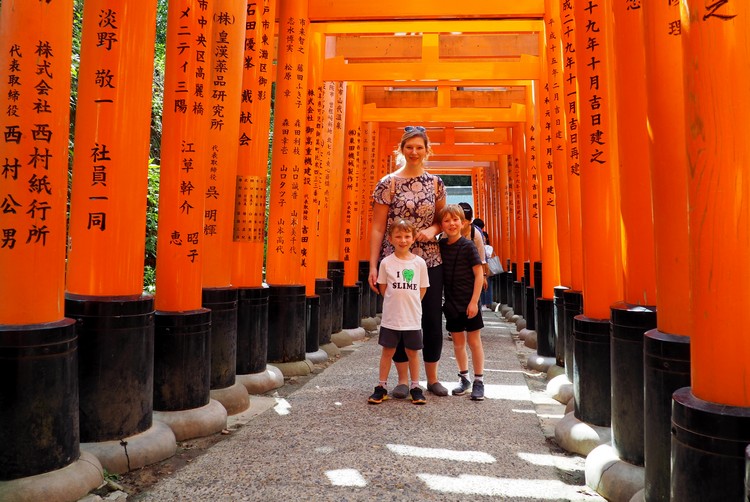
Key Travel Tips for First-Time Visitors
For context, the purpose of our trip to Japan was to attend the Rugby World Cup. We spent 15 days exploring Tokyo, Kyoto, Kobe, and Shizuoka.
We previously traveled to Japan a decade ago, before starting a family, so this visit included new destinations and experiences such as Tokyo Disneyland. You can read about our adventure at Tokyo Disney Resort.
On our past trip, we visited similar cities, including Osaka, Nara, Hiroshima, Yokohama, and Narita, which proved to be an exhausting itinerary packed into just two weeks. Therefore, our recent journey was much more relaxed, allowing us to enjoy a slower pace that is more conducive to family travel.
Explore More Posts from Our Japan Trips:
This travel blog offers insights and practical tips for your first visit to Japan, including important dos and don’ts for tourists.
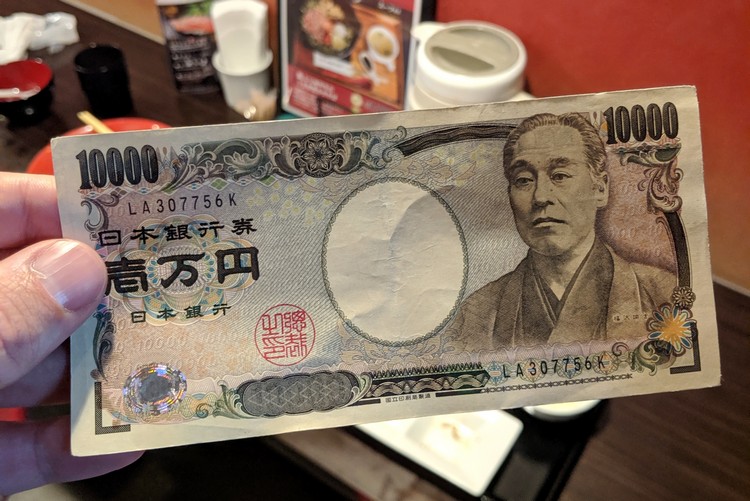
1. Cash is Still King in Japan
Surprisingly, cash remains the preferred payment method in Japan.
While many convenience stores like Family Mart, 7-Eleven, and Lawson accept debit and credit cards, numerous restaurants in tourist areas also accept cards, yet many cafes and shops still operate on a cash-only basis.
Before sitting down at a restaurant, it’s advisable to inquire whether they accept debit or credit. If they do, feel free to use your card and save your cash for later, which could prove beneficial in the long run.
You’ll find ATMs conveniently located throughout the cities. We typically withdrew cash from ATMs in 7-Eleven stores and train stations. Most ATMs limit withdrawals to 50,000 Yen (approximately $600 CAD or $460 USD), which helps reduce unnecessary international bank fees, typically ranging from $2 CAD to $20 CAD per transaction alongside ATM charges.
It’s wise to carry at least 50,000 Yen when traveling to Japan. Your bank may need to order Yen, as it’s not commonly held by Canadian banks, so plan to arrange this a few weeks ahead of your departure.
Avoid converting your currency at the airport; the rates are usually very unfavorable.
2. Soy Sauce is Not Commonly Used
Our first forgettable moment in Japan occurred while trying to order soy sauce at a restaurant.
Our kids adore plain rice and typically smother it with soy sauce. Assuming soy sauce would be a standard condiment across Japan, we were surprised by our misunderstanding.
When we asked for soy sauce at a non-sushi restaurant, our server looked puzzled. We attempted hand gestures and spoke slowly, but the communication gap remained.
I even googled images of soy sauce on my phone and showed them to her, which prompted a smile and nod. Victory? Not quite.
Instead, she brought us Worcestershire sauce, and I mistakenly poured it over the rice, leaving my boys unimpressed.
Let me tell you, rice with Worcestershire sauce is a questionable choice and should be avoided at all costs.
However, you will find soy sauce in sushi restaurants.
We eat sushi regularly in Vancouver, almost weekly. Yet we wrongly assumed we understood the proper etiquette for eating sushi before visiting Japan. Little did we know!
Here’s a brief guide to the appropriate ways to enjoy sushi.
The golden rules are: (1) Do not stick your chopsticks upright into the rice; (2) Don’t cut a sushi piece in half with your chopsticks; and (3) Never mix wasabi into your soy sauce.
Japan’s culture has a multitude of customs to be aware of. However, most locals are forgiving toward foreigners unfamiliar with Japanese etiquette, as long as you remain respectful, quiet, and polite.
Related Reading – Quick Guide to Dining Etiquette in Japan
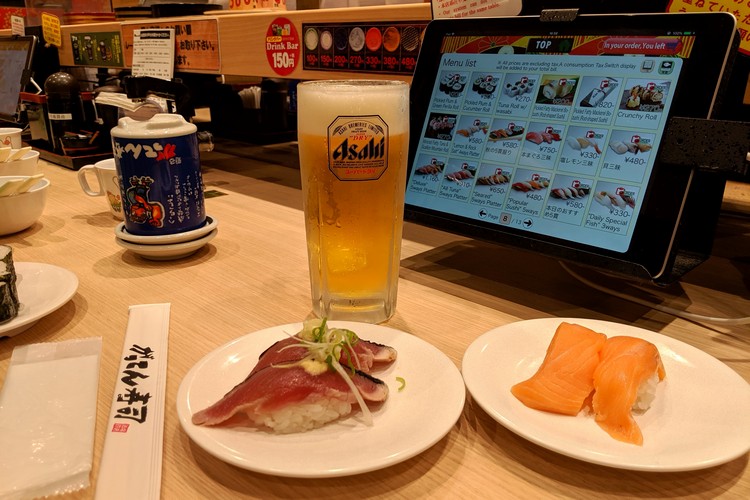
Above – Nigiri sushi at a conveyor belt sushi restaurant in Tokyo.
3. Download the Google Translate App
The misunderstanding about soy sauce could have been easily avoided.
The solution? Google Translate.
We usually navigate language barriers by learning a few essential words. However, the challenge in Japan is that we can’t read the characters, which makes it difficult to identify patterns or remember words.
If you don’t already use Google Translate while traveling, start now! We realized our oversight when we tweeted about our lost-in-translation moment, and several people reached out asking, “Why don’t you use Google Translate?” Great question—we felt a bit silly for not thinking of it.
Google Translate is free, user-friendly, and incredibly effective. If you’re concerned about navigating through Tokyo without knowing any Japanese, this app will serve as your personal tour guide.
Download the app from Google Play or the Apple Store.

4. Save Time by Getting a Suica Card
A Suica Card is a prepaid smart card that allows you to use most forms of public transportation (metro, trains, buses, monorail). Originally designed for Tokyo, these cards can now be used at most train stations across Japan. Using a Suica Card is the easiest way to get around Tokyo.
Here’s a map showing where Suica Cards can be used.
You can conveniently purchase Suica Cards at most train stations using the electronic vending machines shown above. This means you can skip the process of buying tickets for each ride.
Alternatively, you can order Suica Cards online and have them delivered to your home before you travel. We opted for this out of uncertainty regarding purchasing them at the stations, but in hindsight, this step proved unnecessary since they are very easy to buy upon arrival in Japan.
How to Use the Suica Card in Japan
Once you have your Suica Card, add money to it, and head to the turnstiles marked “IC Card” or “Suica Card.” Simply tap your card at the turnstile to pass through the gate when it opens—see the photo below.
When you reach your destination, tap the card again to exit the station. The Suica system automatically calculates and deducts your trip fare.
Things to Know About the Suica Card
- The price includes a deposit of 500 yen; adults and children have different amounts deducted when using transportation.
- Suica Cards can hold a maximum of 20,000 yen, which can be loaded at Automatic Ticket Vending Machines and Fare Adjustment Machines displaying the Suica mark.
- Only yen can be used to load the card; credit cards cannot be used for this purpose.
- The Suica card does not work on express trains, shinkansen (bullet trains), long-distance buses, or airport shuttles.
- You can use your Suica card for purchases on trains, at vending machines, to rent coin lockers, and at convenience stores and restaurants.
Credit source – the above bullet points were taken directly from the JR East website.
Children under 5 years old ride for free when accompanied by an adult.
This detail isn’t widely advertised to foreigners. During our trip, we purchased 4 Suica Cards and reloaded them multiple times before learning from a friendly ticket agent that our 5-year-old, Connor, could ride for free.
Children aged 6 to 11 pay half the adult fare.
Related – Our Experience at the 2019 Rugby World Cup in Japan
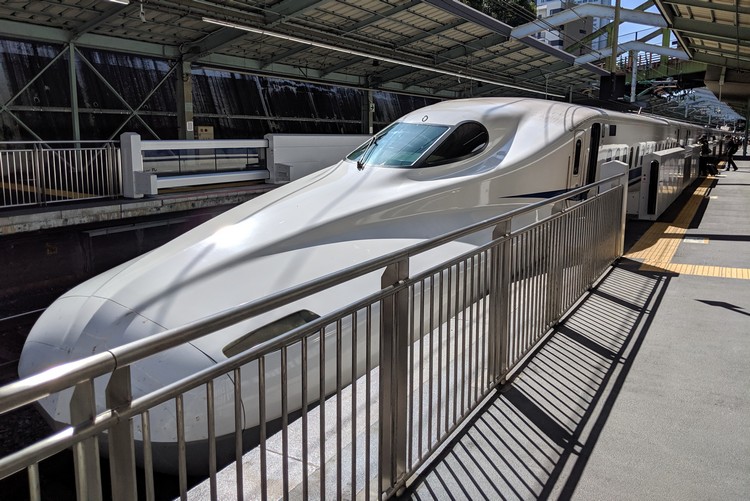
5. You Don’t Need to Get a JR Pass
Nearly every travel article recommends purchasing a Japan Rail Pass.
However, we don’t believe the JR Pass is a must-have for first-time visitors. While it offers numerous benefits—especially if you plan to travel extensively in a short timeframe—it may not be the best fit for your Japan trip.
If your itinerary involves spending more time in major cities, such as Kyoto, Osaka, Kobe, and Tokyo, you might find it more economical to buy one-way train tickets instead of getting a JR Pass.
For shorter distances, such as traveling from Kyoto to Osaka, local trains are available and offer a less expensive option without being significantly slower.
Check Shinkansen ticket prices here.
We created an itinerary for our Japan trip and calculated the costs for each leg of the journey. Calculating our expenses showed that purchasing individual tickets was more economical than getting a JR Pass.
Since our trip spanned 15 days, we would have needed to buy the 14-day JR Rail Pass, which costs around $576 per adult and $288 per child as of October 2019. By opting for individual tickets, we saved approximately $100 per adult and $50 per child.
While savings were modest, they were sufficient to justify skipping the JR Pass.
As the majority of our time was spent exploring Tokyo, Kyoto, and Kobe, we utilized our Suica Card for subways and local trains (most of which aren’t covered by the JR Pass).
If your stay lasts about a week, the JR Pass could be a worthwhile investment.
Research the JR Pass here, and use the Japan Rail itinerary planner.
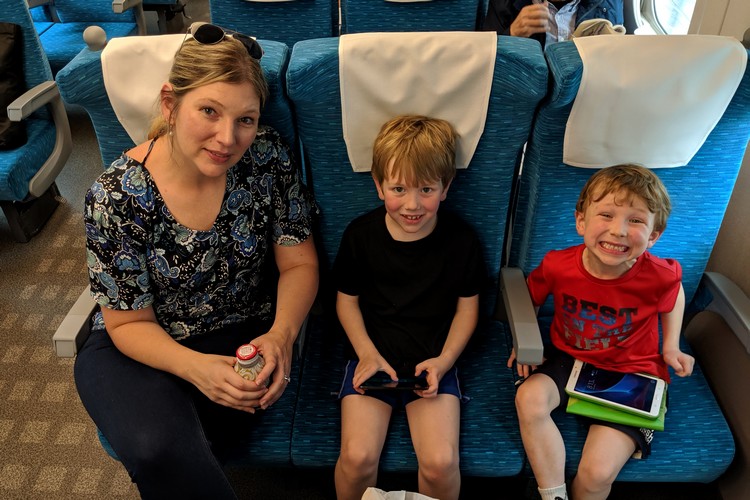
Shinkansen Seat Reservations
If you’re traveling during busy periods, making Shinkansen seat reservations is recommended. To do so, you need to visit a ticket agent at the train station, meaning the JR Pass may not save you much time.
It’s also important to note that, traveling with two young boys, we needed seats next to each other. If you’re traveling solo or don’t mind sitting apart, you might prefer to go without reservations, but that wasn’t an option for us.
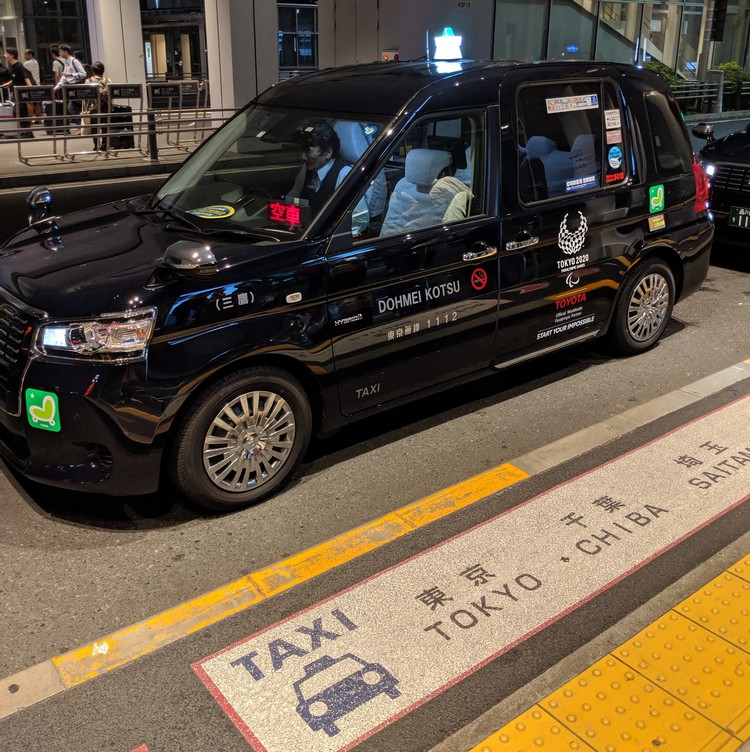
6. Taxis are Expensive—Avoid Them if Possible
Taxis in Japan can be costly. We were aware of this before our arrival, but we were still taken aback by the fare for a taxi ride from Tokyo Haneda Airport to the Sheraton Tokyo Bay Hotel near Tokyo Disneyland.
Even though the airport was only 25 km away and the drive took around 30 minutes, the fare converted to almost $100 CAD. This felt steep compared to similar distances in Vancouver, where taxi fares range from about $50 to $60 CAD depending on traffic.
On the bright side, taxis are thoroughly clean and comfortable, and drivers wear white gloves for added service. Although an expensive option, they do provide a comfortable, first-class experience.
Traveling to Tokyo? Read: How to Spend 3 Days in Tokyo
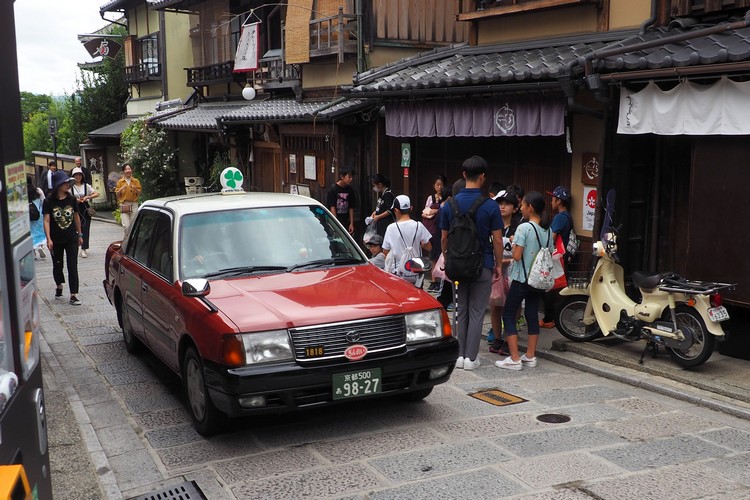
7. Uber is Available in Japan, but It’s Different
Yes, Uber does operate in Japan, but its availability is mostly confined to major cities like Tokyo and Kyoto.
Despite this, it remains less popular with locals, as the train system is so well-designed. Most people use Uber primarily for airport transfers rather than for inner-city travel.
We took Uber in both Tokyo and Kyoto.
The Uber app functions similarly to North America, so there’s no need to download an alternative version. You can input your destination in English, eliminating potential language misunderstandings since many taxi drivers may not speak English.
In essence, Uber rides in Japan feel quite similar to conventional taxis, as the vehicles resemble traditional taxi cabs.
We appreciate that fares are automatically charged to our linked credit card, alleviating the need for cash transactions and avoiding waiting for change. Moreover, Uber fares often come at a lower price compared to traditional taxis, with the app displaying estimated costs before you confirm the ride. This feature ensures you’re not overcharged.
One drawback to using Uber in Japan is that there aren’t as many drivers compared to North America, resulting in longer wait times compared to hailing a taxi directly. For instance, when we were in Kyoto, our driver took 20 minutes to reach us. It was rush hour and traffic was heavy, but numerous taxis passed by while we waited.
If you’re not a fan of Uber or encounter issues with the app, consider the JapanTaxi app, which connects to several local taxi companies.
Related – Staying in Tokyo Disney Resort? Read Our Review.
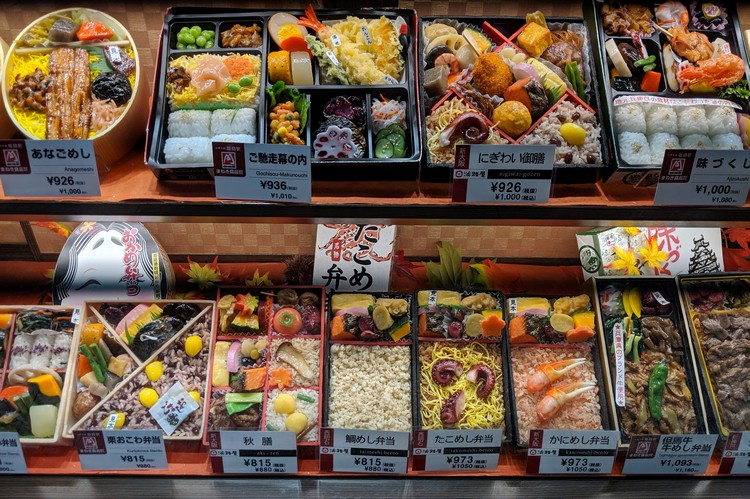
8. Plastic Food Displays are Common in Restaurants
You won’t have to worry about deciphering restaurant menus in Japanese; most places in Japan showcase plastic replicas of their dishes, particularly near train stations, shopping areas, and tourist spots.
This is a terrific feature as it eliminates any confusion about your order and resolves potential language barriers. If you’re ever in doubt, simply point to the dish you’d like.
Most restaurant menus also include photographs of the various offerings.
Related – Beginner’s Guide to Eating in Japan
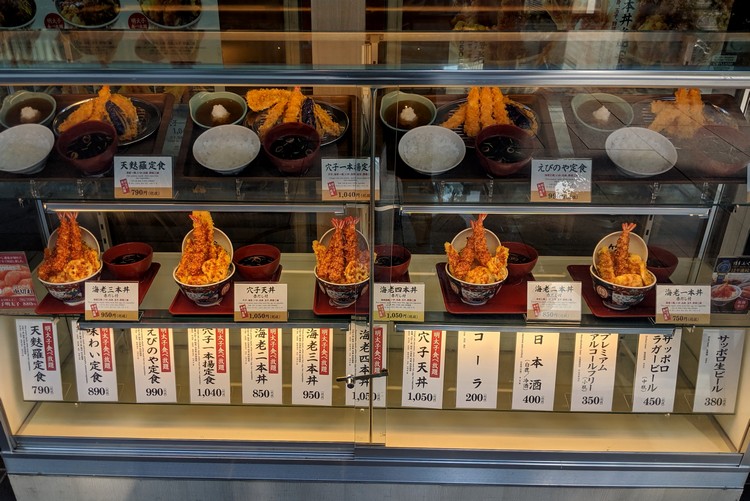
Do you have any travel tips for Japan? Please share in the comments below!
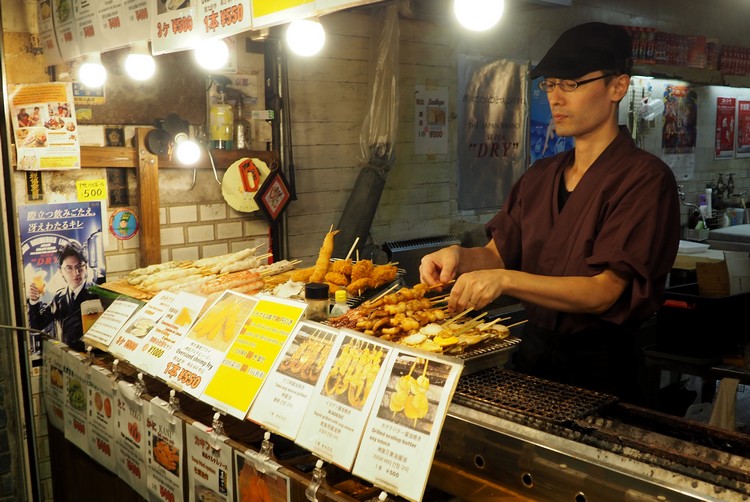
9. Don’t Walk and Eat in Japan
In Japan, it is considered impolite to eat while walking. If you buy food to go, the expectation is that you will not consume it while walking down the street.
This rule applies to food purchased at convenience stores—like 7-Eleven and Family Mart—as well as from street vendors or food stalls.
Instead, you should eat at the location of purchase or just outside the store. There are often designated eating areas or benches available in public spaces.
It’s also against the rules to eat on public transport—don’t be that tourist.
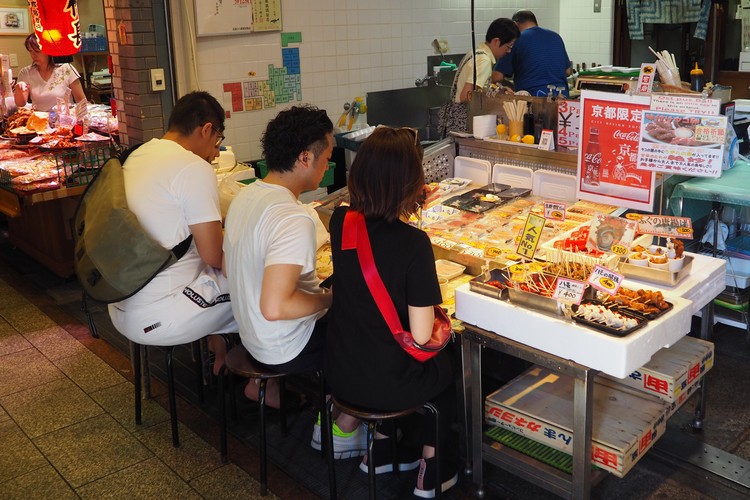
Above – a food stall at Nishiki Market in Kyoto selling quick bites.
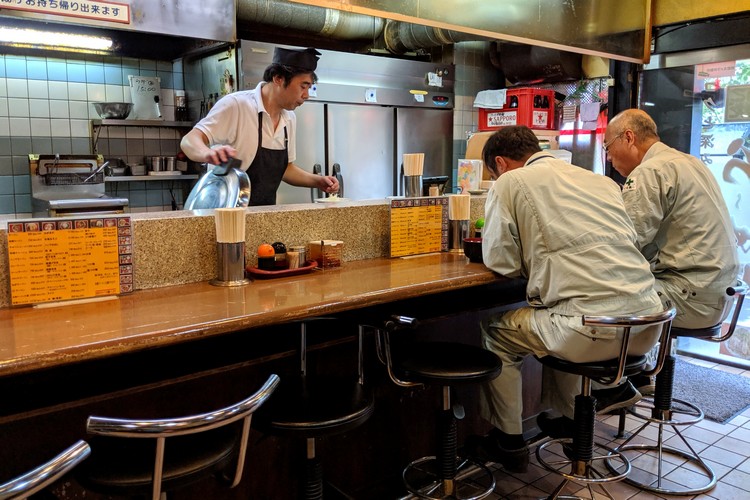
10. Do NOT Tip at Restaurants
One of the most frequent questions from first-time visitors is whether tipping is customary in Japan.
In reality, tipping is not expected and can sometimes be viewed as rude.
We made this error during our first visit to Tokyo. After leaving a generous tip, a server ran after us to return our change, clearly unamused.
So remember this crucial piece of knowledge: do NOT tip in Japan.
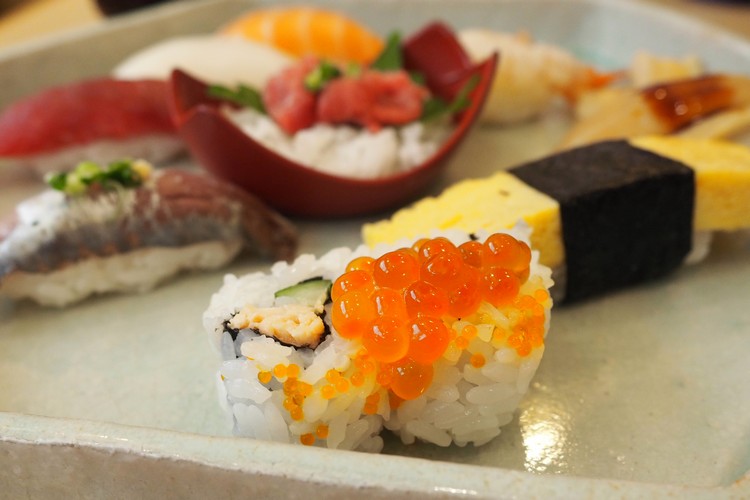
Related: 50 Photos of Kyoto That Will Inspire You to Visit
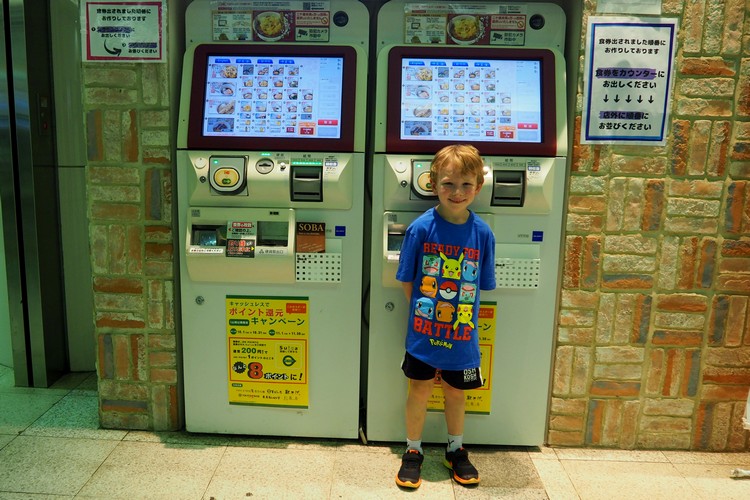
11. Order Your Lunch from a Vending Machine
One of the things we love about Japan is its efficiency and convenience. A prime example of this is the electronic vending machines found outside many restaurants.
These touch-screen machines frequently showcase images of every dish available, simplifying the ordering process and minimizing language barriers.
The process is straightforward: select what you want, pay (either by cash or credit card), take your receipt, and head inside. Your food will either be brought to your table, or your order number will be called to pick it up at the counter.
After eating, you can simply leave—no need to wait for a bill.

12. Carry Your Trash—Garbage Bins are Scarce
This concept still perplexes me.
How can a nation maintain cleanliness without public garbage bins? It’s astonishing yet effective.
Although it may seem counterintuitive, this approach works wonderfully in Japan, helping maintain its reputation as the cleanest country we’ve ever visited.
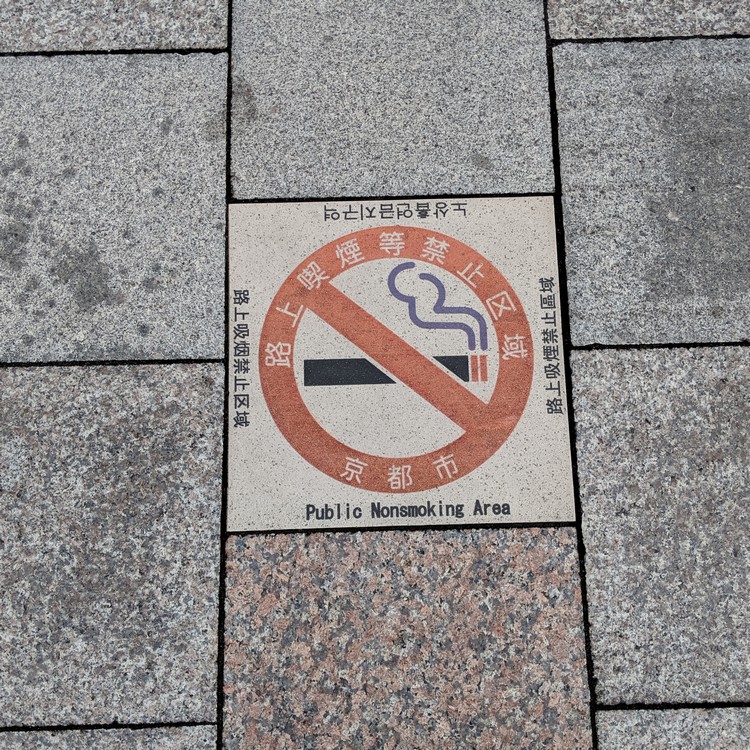
13. No Smoking in Public Areas
Japan is not only the cleanest country we’ve visited, but it’s also remarkably smoke-free. Most city streets and public areas prohibit smoking, even posting no-smoking signs on sidewalks.
You might be wondering where smokers can light up.
Designated smoking areas are available throughout the city, typically situated on side streets and away from crowds.
The fantastic aspect of this system is that people follow the rules and only smoke in those designated spots. Imagine that!
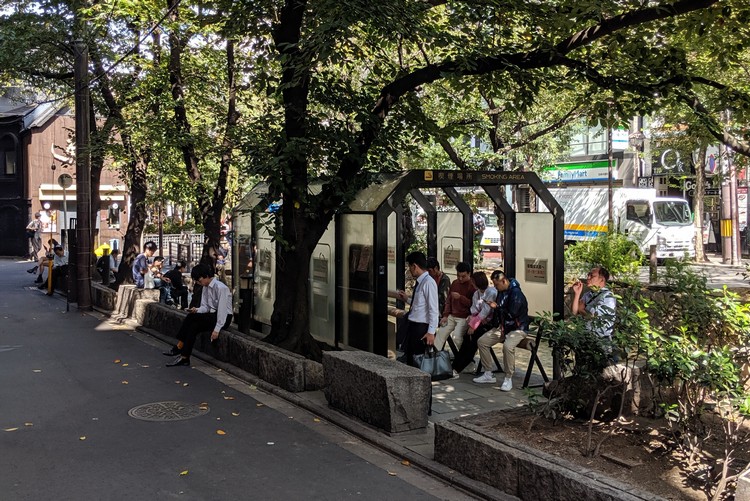
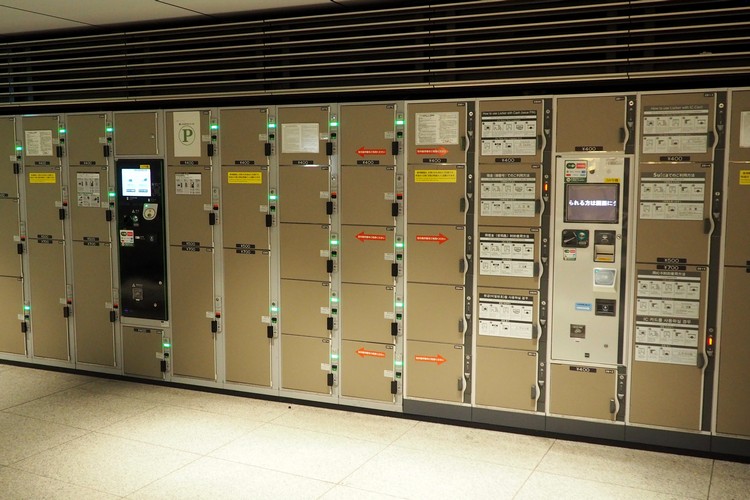
14. Train and Subway Stations Offer Storage Lockers
Most train and subway stations feature storage lockers for temporary use.
This service is handy if you’re sightseeing and prefer not to carry your luggage around.
For example, if you check out of your hotel at 11:00 AM but still want to visit a few temples before catching your train, you can stow your luggage in these lockers for convenience.
The photo above was taken at Tokyo Station, which offers lockers of various sizes. The price usually hovers around 500 yen, depending on the locker size, and payment can be made using cash or a credit card.
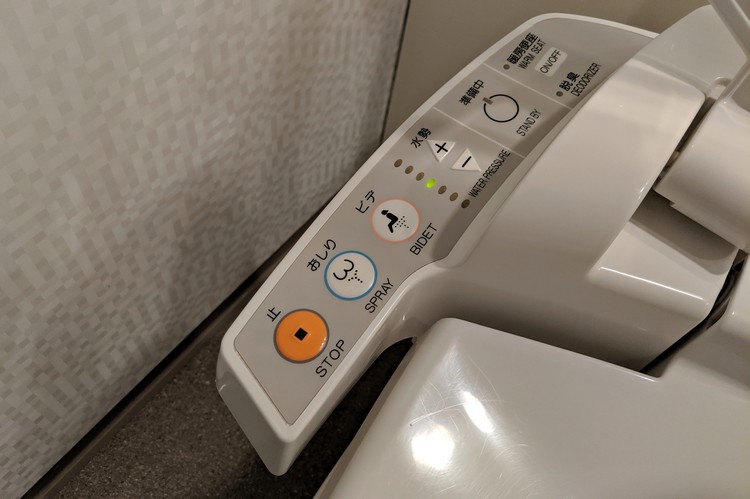
15. Japanese Toilets Are Advanced
Your first encounter with a Japanese toilet will be unforgettable.
When comparing Japanese toilets to their North American counterparts, they’re on a whole different level of technology. Public restrooms in Japan are remarkably clean and organized too.
Typically, toilets in Japan look like the one shown in the picture above, with heated seats and a control panel that allows you to adjust the spray intensity for cleansing.
Some toilets even play sounds or music for privacy. I encountered one that produces a flushing noise to mask any sounds one might make while using the restroom.

BUT – Not All Toilets Are High-Tech
It’s worth mentioning the other types of toilets you might come across in Japan. While less common, some places may still have the traditional squat toilet, as depicted in the image above. Encountering this type of toilet can be surprising, especially for first-time visitors to Asia.
I recall my initial experience with this style of toilet in Thailand; it was certainly an adjustment!
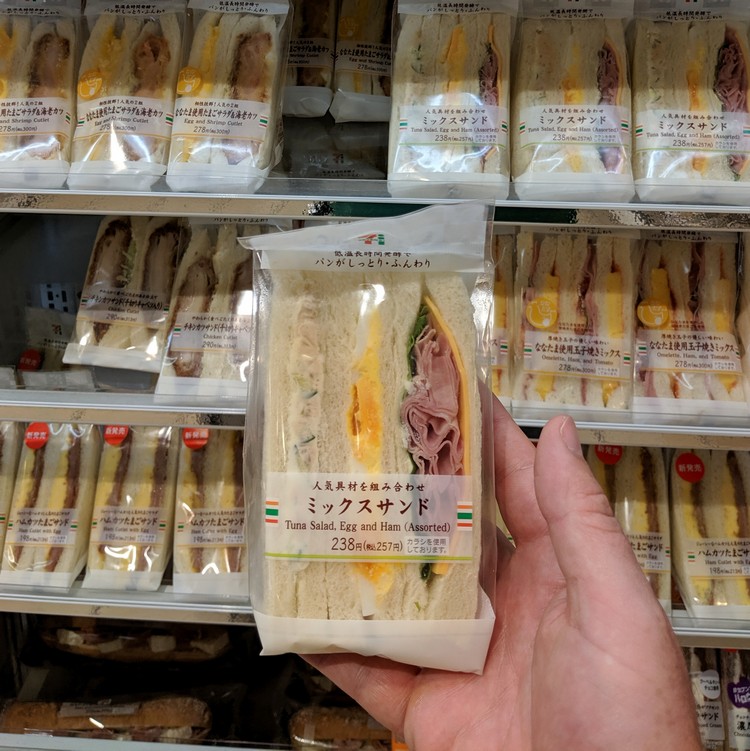
16. Eating at Convenience Stores is Normal
In Canada, we seldom grab ready-to-eat food from convenience stores unless on a road trip or lacking options.
However, in Japan, ready-to-eat food at convenience stores is quite common.
Convenience stores offer an excellent selection of dishes ranging from sandwiches to bento boxes to pastries. We frequently picked up prepackaged sandwiches (see the image above) and baked goods for breakfast. You can also purchase beer and wine at these stores, making dining affordably a breeze.
Some popular convenience store chains include 7-Eleven, Family Mart, and Lawson, with most open 24 hours.
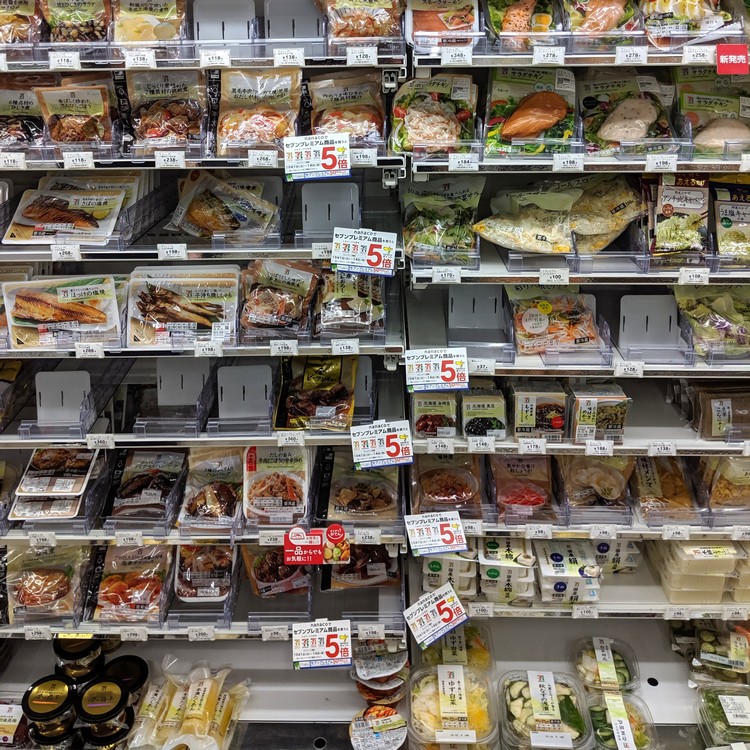
Related – Quick Guide to Japanese Cuisine for Tourists
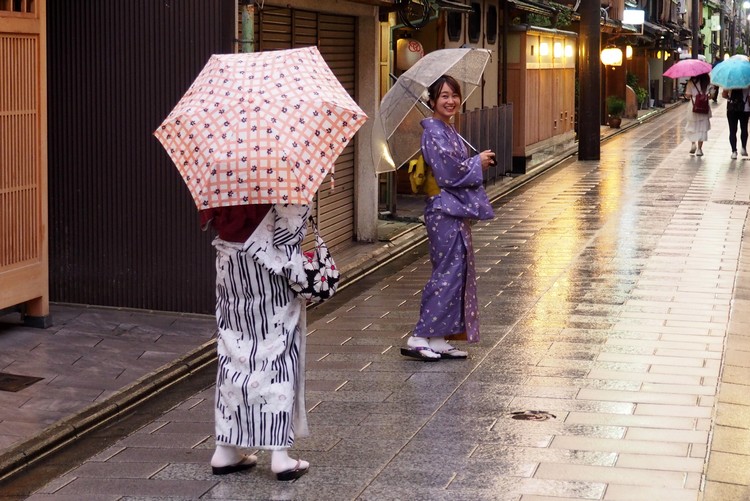
17. Wearing Kimonos in Kyoto is Trendy
When visiting Kyoto for the first time, you’ll notice numerous individuals adorned in kimonos as they stroll through historical districts like Gion and Higashiyama.
Initially, we mistook this for local attire; however, we later discovered that many people rent kimonos for photos at iconic Kyoto landmarks such as Kiyomizu-dera, Hōkan-ji Temple, and Yasaka Shrine.
The majority of those in kimonos are not local residents but visitors from other Japanese cities or international tourists. Renting kimonos and hiring a photographer for a few hours has become a popular activity.
Many kimono rental shops are located in the old Higashiyama District of Kyoto.
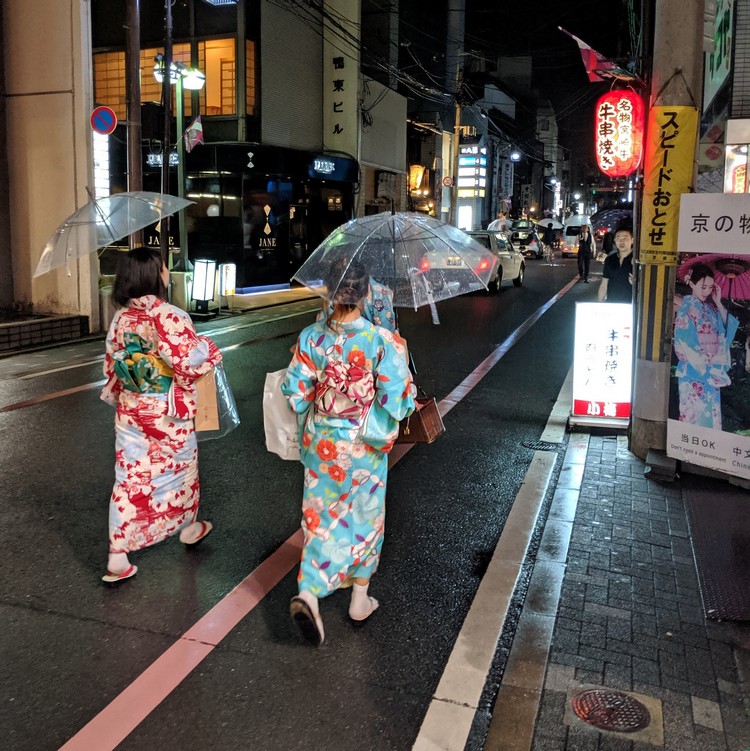
Examine the advertisement on the right, then observe the woman in the kimono—what a coincidence!
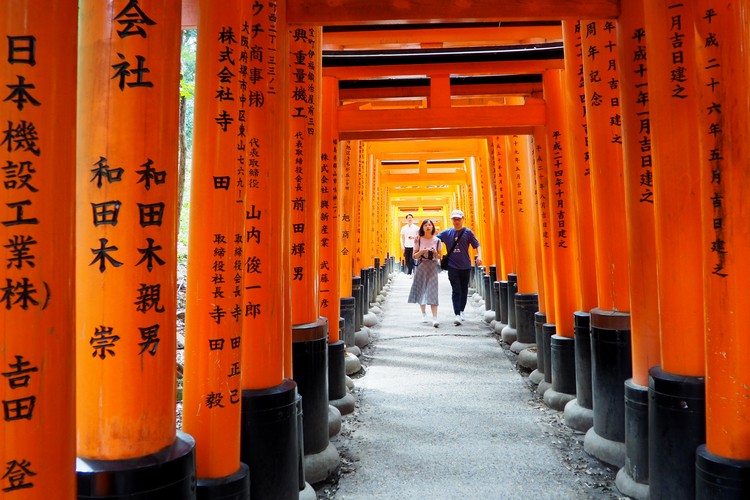
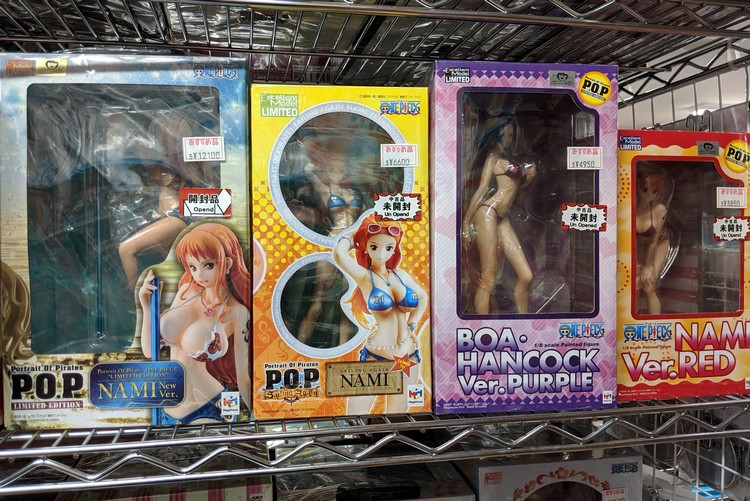
18. Toy Stores Feature Unique Figures
I should preface this by mentioning that we traveled to Japan with our two young sons.
Like most boys, they have an affinity for toys. Currently, they are both big fans of Pokémon, so they were on the lookout for cards and toys.
To our surprise, when exploring toy stores in Japan, we encountered intriguing figurines, including some quite suggestive half-naked dolls displayed next to Pokémon figurines.
While I don’t want to come off as overly conservative, it’s something to keep in mind if you’re taking kids to toy stores that feature animated figures. I certainly wasn’t prepared for the questions that arose!
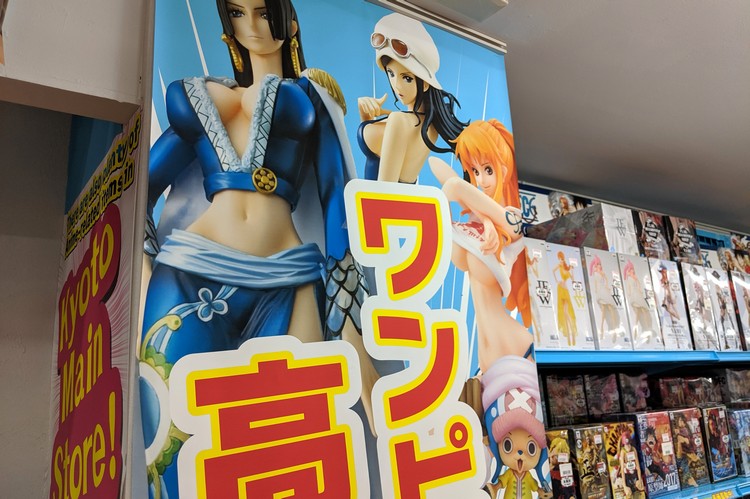
Some of the figures and posters can be quite suggestive and seemingly disproportionate.
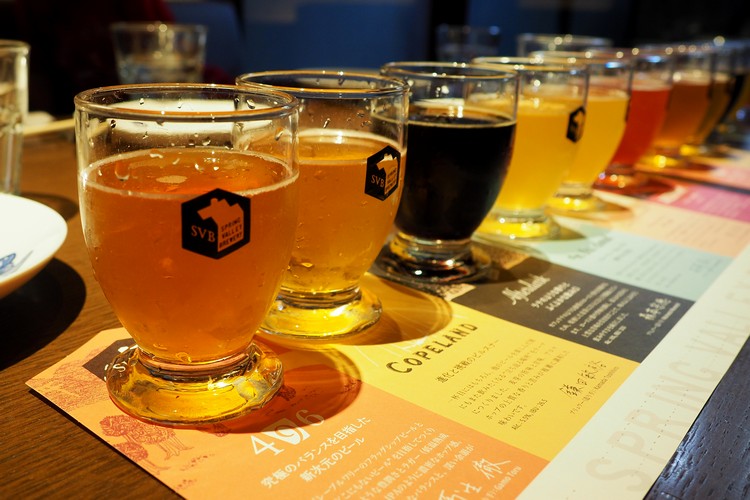
19. Craft Beer is Available, but Not Extremely Popular
You can find craft beer in Japan, although it doesn’t enjoy the same popularity as it does in North America or Europe. While Japan is not the first nation that comes to mind regarding craft beer, the scene has been developing in recent years.
During our visit to Kyoto’s Nishiki Market, we discovered Spring Valley Brewery, where we ordered a flight of beer that included eight varieties.
Most restaurants in Japan primarily serve the big three brands: Asahi, Kirin, and Sapporo.
Even though we typically favor pale ales over lagers or pilsners, we found ourselves desiring a cold pint of Sapporo during our time in Japan, reminiscent of how much better Guinness tastes when enjoyed in Ireland.
Check out a list of Japan’s top craft breweries.
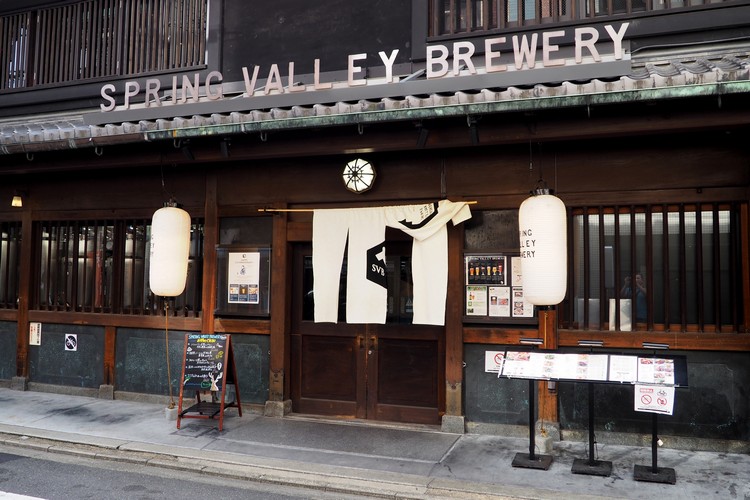
Spring Valley Brewery in Kyoto.
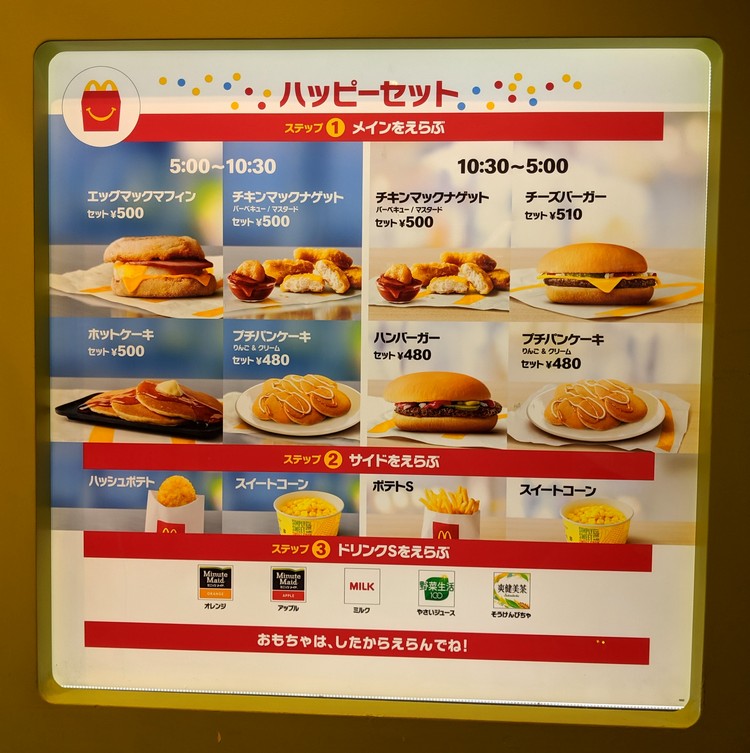
20. McDonald’s Menus are Quite Similar
Sometimes, all you need for breakfast is an Egg McMuffin. Am I right?
Our boys are huge fans of Chicken McNuggets and fries from McDonald’s. After several days of exploring various foods in Tokyo—and not always succeeding—they were thrilled to spot the familiar Golden Arches.
We tend to visit McDonald’s while traveling internationally—not for the food itself, but to see how they’ve adapted their menus to suit local tastes.
Surprisingly, the McDonald’s menu in Japan mirrors that of Canada.
You can order Big Macs, McChicken sandwiches, Egg McMuffins, and Chicken McNuggets. However, there are regional specialties, such as the Teriyaki Burger and Shrimp Burger. They were okay, but nothing to rave about, as the primary difference comes down to the sauces used.
Here’s a list of McDonald’s menu items exclusive to Japan. While I’ve only seen a few of these, it’s worth noting that the menu is frequently updated and varies by region.
McDonald’s is also a reliable spot for free WiFi in Japan.
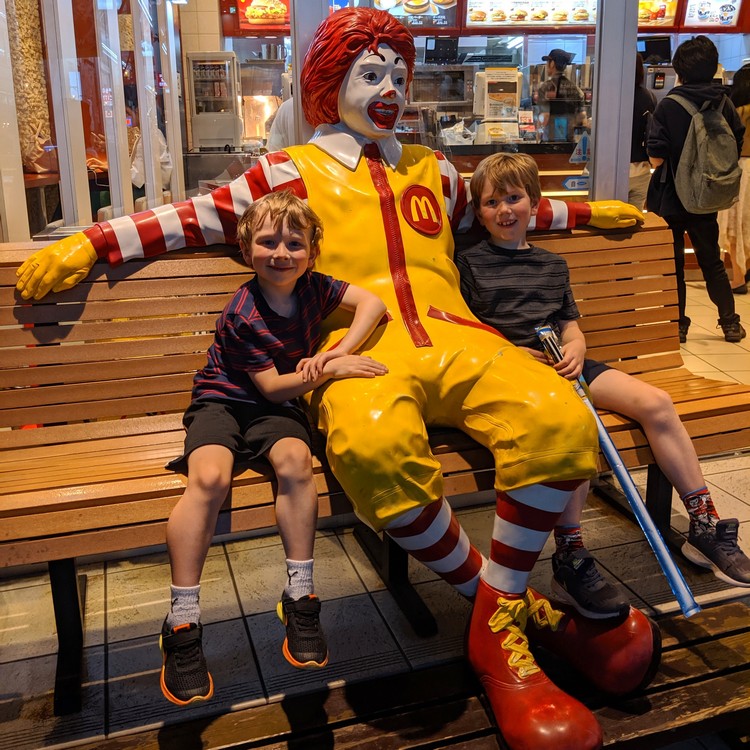
Share YOUR Japan travel tips in the comments below!
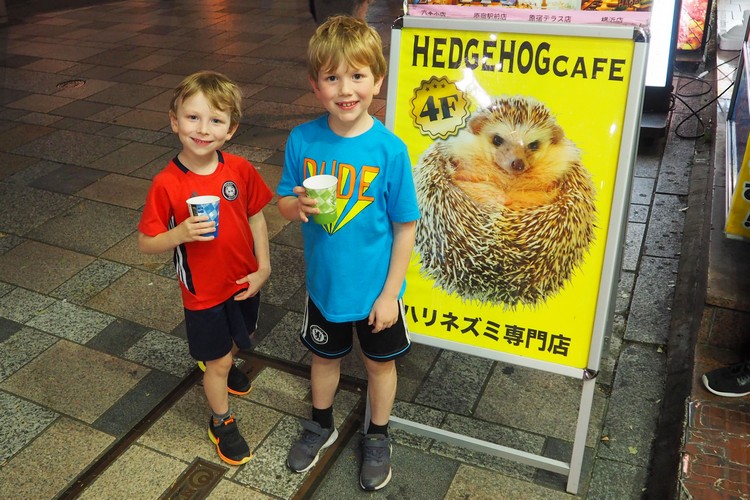
21. Choose Your Themed Café Wisely
Tokyo is famous for its quirky and unique themed cafés.
While many Japan travel blogs recommend checking out themed cafés—something we also endorse—it’s crucial to conduct proper research first. Many of these cafés act as tourist traps and exploit their visitors and the animals involved.
We opted to visit HARRY Hedgehog Café in Harajuku.
Our eldest son recently adopted a hamster, so he was eager to play with hedgehogs. HARRY Hedgehog Café ensures a comfortable environment by designating rest areas, as relentless handling can cause stress for the animals. Moreover, this café aims to find suitable homes for the hedgehogs it features.
You’ll find HARRY Hedgehog Café just a two-minute walk from Harajuku Station on the fourth floor.
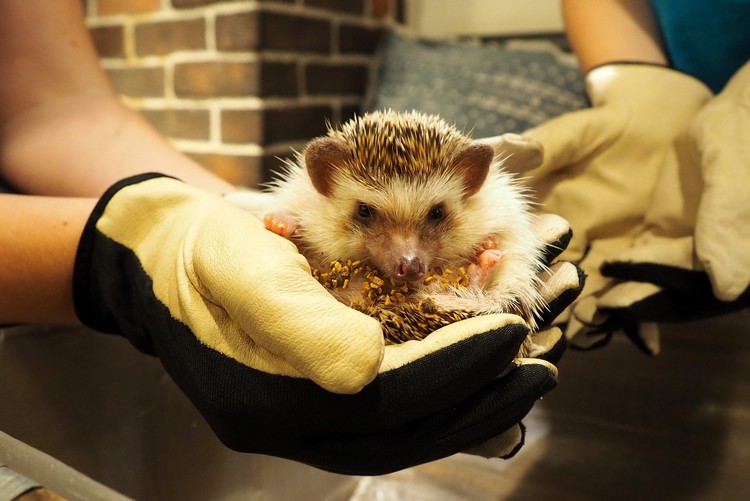
Explore More Japan Blog Posts Here.
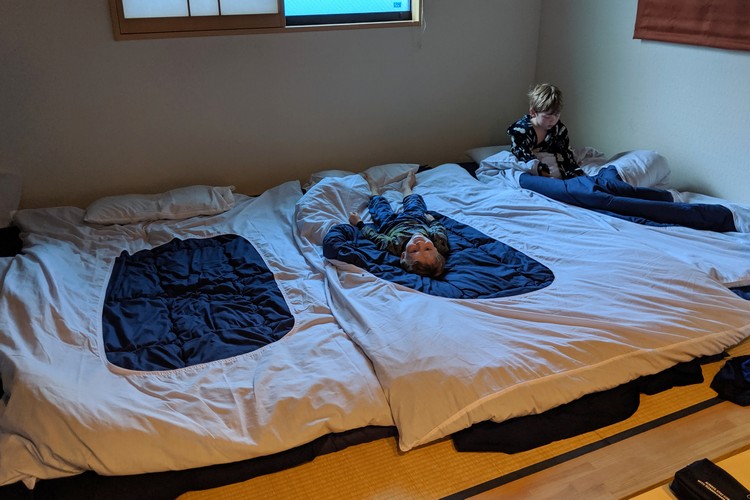
22. Experience Staying at a Traditional Japanese Ryokan
Staying at a Ryokan is a unique Japanese experience that every first-time visitor should consider—at least once.
A ryokan is a traditional Japanese inn typically featuring tatami-matted rooms and communal baths. Instead of conventional beds, each guest receives a Japanese futon mattress with bedding.
Check out this video demonstrating how to construct a futon bed in a traditional ryokan.
Our boys found it amusing to sleep together on the tatami, likening it to indoor camping. Meanwhile, we’re accustomed to sleeping on comfortable mattresses, so we felt sore and stiff in the morning. Although it’s a fun experience, after a few nights on the floor, we were ready to get back to a proper bed.
Another unique feature of ryokans is the communal baths.
This bathing experience differs greatly from Western culture—spoiler alert: you will be naked with other guests. Don’t worry—guests are segregated by gender, meaning men with men and women with women.
Many Canadians might feel uncomfortable with this public nudity, as it deviates from our norms. However, communal baths usually involve sitting down on a stool to shower and then soaking in shallow hot tubs. Some ryokans even provide saunas.
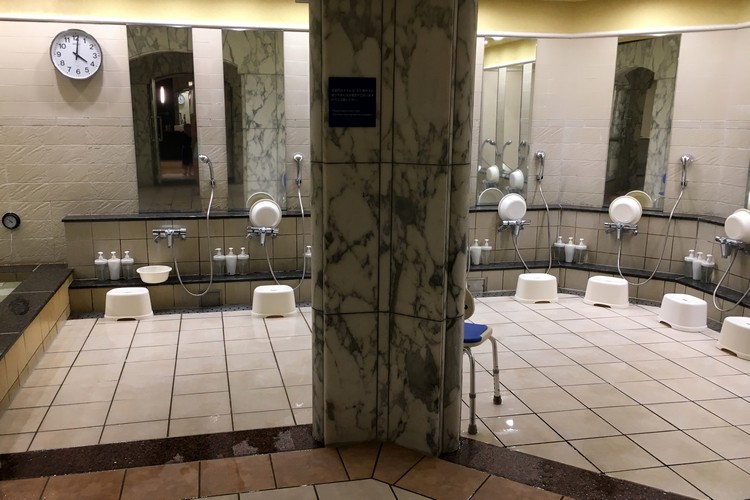
Above – shared bath and shower area at a ryokan in Japan.
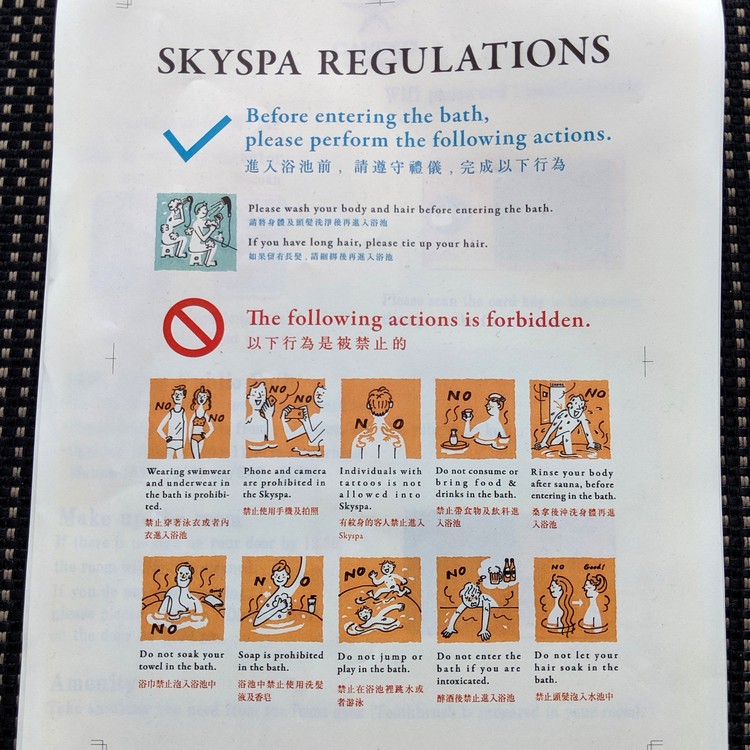
23. Cover Up – Tattoos Are Not Well Received
If you’re staying at a ryokan or visiting an onsen (Japanese hot springs), you may be required to cover your tattoos.
In Japan, tattoos carry negative connotations associated with criminals and gang members, leading to potential denial of access to these facilities for individuals with visible tattoos.
This happened to us in Kobe City. Our hotel’s spa on the top floor denied us entry upon arrival, stating that individuals with tattoos were not permitted.
When we inquired about dining at the hotel’s Skyspa, they offered us bandages to cover our tattoos. Although it felt excessive, we complied with the dress code.
If you have tattoos, keep this in mind when planning your travel.
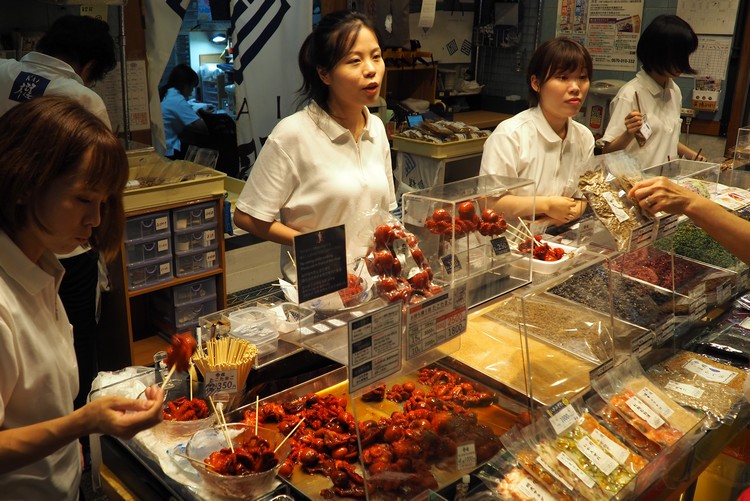
24. English is Usable for Communication
Contrary to what we had read before visiting Japan, we found most train stations, hotels, and shopping centers featured English signage. We encountered little difficulty navigating without speaking Japanese.
Japan hosts numerous international events, such as the 2019 Rugby World Cup and the upcoming Tokyo 2020 Olympics, which increased the country’s adaptation to English.
The United Nations World Tourism Organization (UNWTO) estimated over 28.7 million tourists visited Japan in 2017, with anticipated growth of approximately 6% each year.
It’s wise to learn a few basic Japanese words; locals appreciate your effort to communicate in their language, even if your pronunciation is off.
When in doubt, remember the third tip on this list.
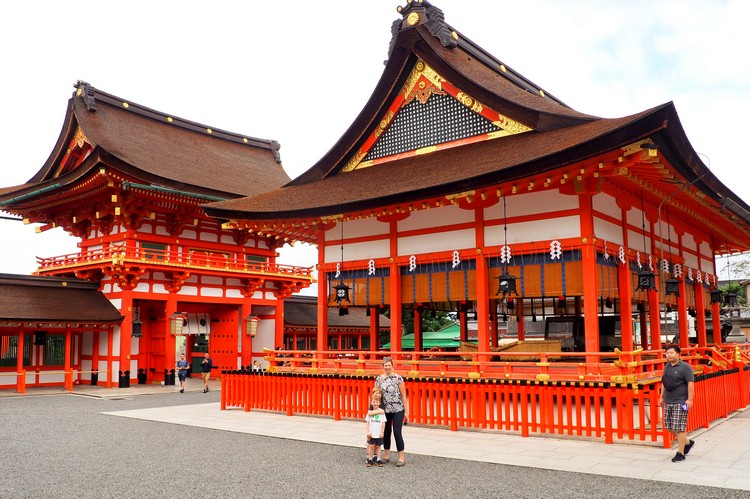
25. Japan is Very Safe
Yes, it is safe to travel in Japan.
Japan is an excellent destination for family travel, consistently ranking as one of the safest countries in the world. We found the people to be incredibly friendly, respectful, and accommodating throughout our trip.
At no point did we feel unsafe during our travels.
How Safe is Traveling in Japan?
Japan is ranked in the top 10 of the Global Peace Index, making violent crime a rarity. The general crime rate in Japan is significantly lower than that of the United States.
Of course, as with any destination, it’s crucial to use common sense. For instance, avoid walking down dark alleys at night, be cautious while withdrawing cash from ATMs, and refrain from engaging in illegal activities.
Before traveling to Japan, consult travel advisories to stay informed. The country is susceptible to typhoons, earthquakes, volcanic activity, landslides, and tsunamis.
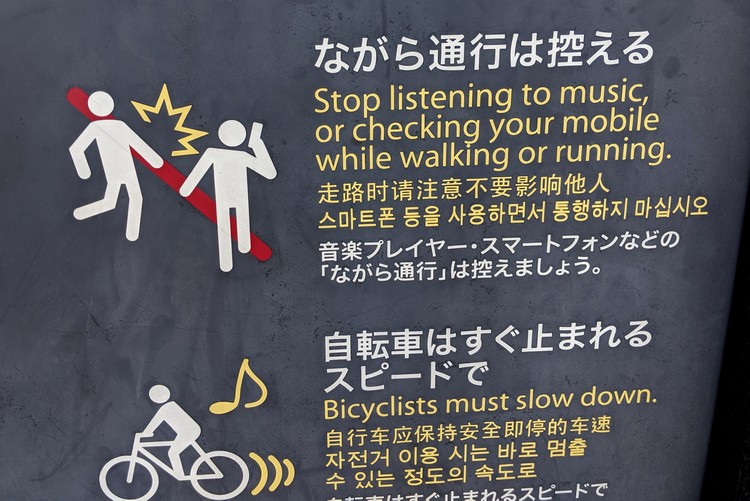
Additional Japan Travel Tips to Keep in Mind
- Remove your shoes when entering homes, hotel rooms, or onsen (hot springs).
- Avoid pointing directly at individuals – it’s considered impolite.
- Practice patience and wait your turn. Japanese people highly value queuing, so don’t skip the line!
- It’s common for people in Japan to wear paper face masks to protect their health and yours.
- Keep noise levels down in public spaces. No phone conversations or music without using headphones (see above image).
- Always act politely and show respect to everyone.
- When paying, place your cash on the tray instead of handing it directly to the cashier.
- Don’t blow your nose in public.
- Bring a portable multi-charging adaptor with USB outlets.
- Consider acquiring a portable WiFi device to stay connected during your travels.
- Be aware that not all tourists are welcome. While many locals are friendly and helpful, some places—like high-end restaurants in Ginza—may have restrictions on tourists.
- Everything seems to be smaller. Hotel rooms, restaurants, vehicles, and vans tend to be compact—have you heard of the Kei Car vehicle class?
- Most standard hotel rooms feature twin beds. Keep this in mind when booking accommodations; check for cheap hotel options in Japan here.
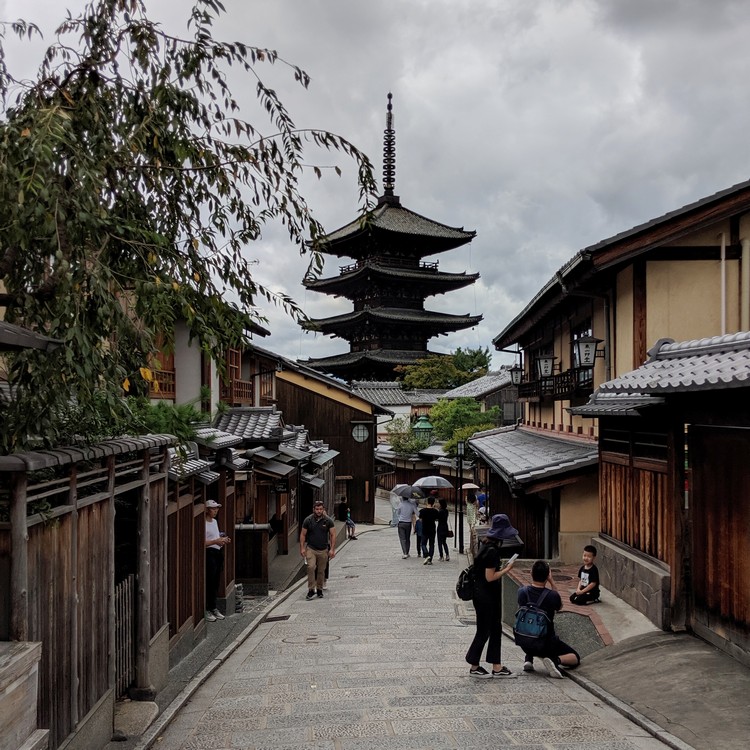
Check Out More Posts About Japan:
Have you visited Japan? What tips did we overlook?
What would you add to our travel tips for Japan?
Feel free to share your Japan travel tips in the comments section below.


